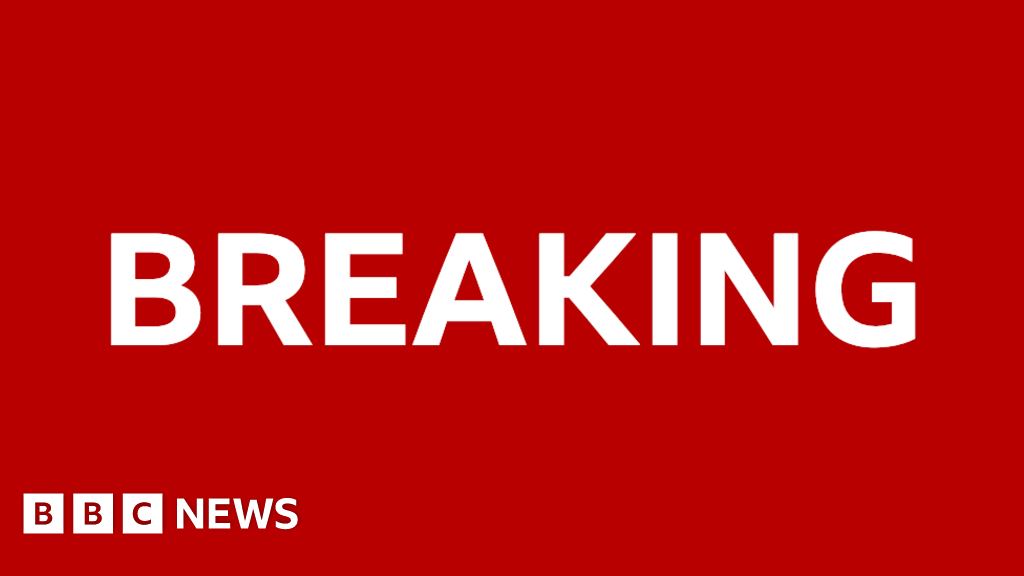ARTICLE AD BOX
 Image source, Twitter
Image source, Twitter
The solo protester's demonstration in Beijing has inspired others elsewhere to protest
A rare one-man protest against Xi Jinping in Beijing has inspired solidarity protests around the world as China's party congress sits this week.
Last Thursday, a man strung banners across a bridge in China's capital that accused Mr Xi of being a dictator.
He was quickly detained but photos of his action spread around the world.
Since then similar signs and messages have appeared on several university campuses in the US, UK, Europe, Australia and elsewhere.
One handwritten sign at Colby College in the US state of Maine praised the Beijing man's action and said: "We, people of China, want to spread this message that speaks our mind in places without censorship."
Many replicate the messages displayed last week on the Sitong bridge in Beijing's Haidian district. Some posters also show anti-Xi messages like "Not My President" and "Goodbye JinPing".
Image source, INSTAGRAM/CITIZENSDAILYCN
Image caption,Posters critical of Xi Jinping were seen plastered on a wall at London's Central Saint Martins college
On Instagram and Twitter, several China activism accounts have urged followers to heed the Beijing protester's rallying cry "to strike" and take action during the week of the Communist Party congress.
According to social media accounts, protest signs have been seen at Stanford University, Emory University, Goldsmiths College, Parson School of Design, Melbourne University as well as the City University of Hong Kong and Hong Kong University.
In some sites, they appeared to have been taken down shortly after they were put up. One sign, posted at the University of Toronto, attracted a rebuttal in the form of a letter defending Xi posted next to it on the noticeboard.
Similar signs have also purportedly appeared within China according to images shared by activist groups, with some referencing the 1989 Tiananmen protests.
"The spirit of 8964 will never be snuffed out," said one piece of graffiti apparently scrawled on a public bathroom stall in Sichuan, referring to the date of the crackdown.
Last week's protest has sparked a swift crackdown online, with all footage, pictures and key words such as "Haidian", "Beijing protester" and "Sitong bridge" scrubbed from Chinese social media platforms. Even more vaguely-linked words like "hero" and "bridge" returned restricted results.
There has been heightened security in Beijing in the days following the protest, with extra police and personnel stationed at bridges in the city.
Image source, BBC/ED LAWRENCE
Image caption,"Bridge watchers" have been stationed at crossings across Beijing since last week's protest
Some WeChat users who shared the protest pictures online have had their accounts suspended, according to reports. One man was reportedly arrested after he shared pictures on Twitter, which can be accessed in China via a virtual private network.
The mystery protester, dubbed "Bridge Man", has been compared to "Tank Man", the unknown Chinese man who stood in front of a line of tanks during the Tiananmen protests.
"Bridge Man" has been the subject of extensive online investigations into his identity. Internet sleuths have identified him as an academic and tracked down his social media profiles which are said to include two Twitter accounts.
One of these was wiped on the weekend, and a new tweet was posted - a line from Chinese revolutionary Sun Yat-sen's will - which read that the statesman had dedicated his life to seeking freedom and equality in China.
Activists have expressed fears for the "Bridge Man's" welfare, while also praising him for the protest where he disguised himself as a roadside worker, yelled slogans into a loudspeaker and set tyres on fire.
Videos from the scene showed the man apprehended by police officers and bundled into a car.
"With everything to lose, you wait patiently for them to come, and follow them into their car. You walk into the machine," one tribute on an activist account read. It added: "Your act is still reverberating around the world."
Chinese police authorities have declined to respond to BBC queries about the incident.
The protest took place on the eve of the 20th Communist Party congress, which will run until Sunday. Mr Xi is expected to be elected as party leader for third term, cementing his grip on power.

 2 years ago
22
2 years ago
22








 English (US)
English (US)